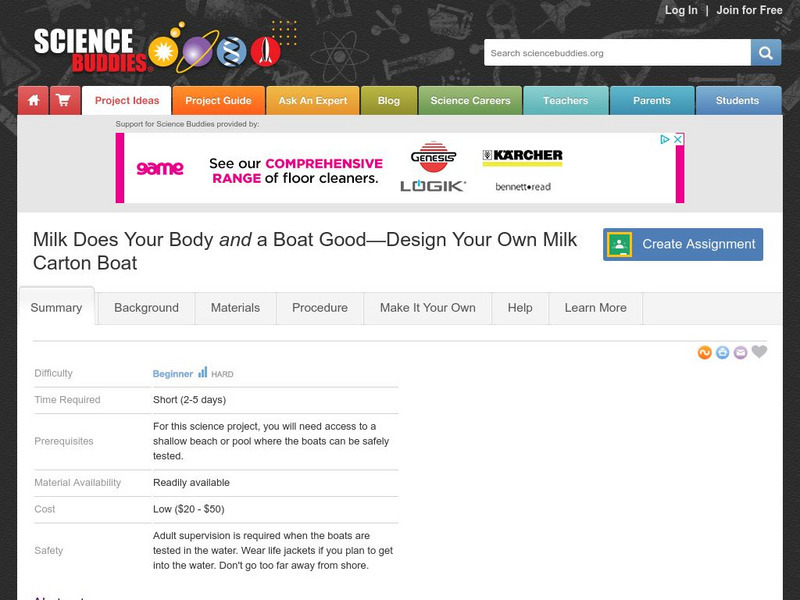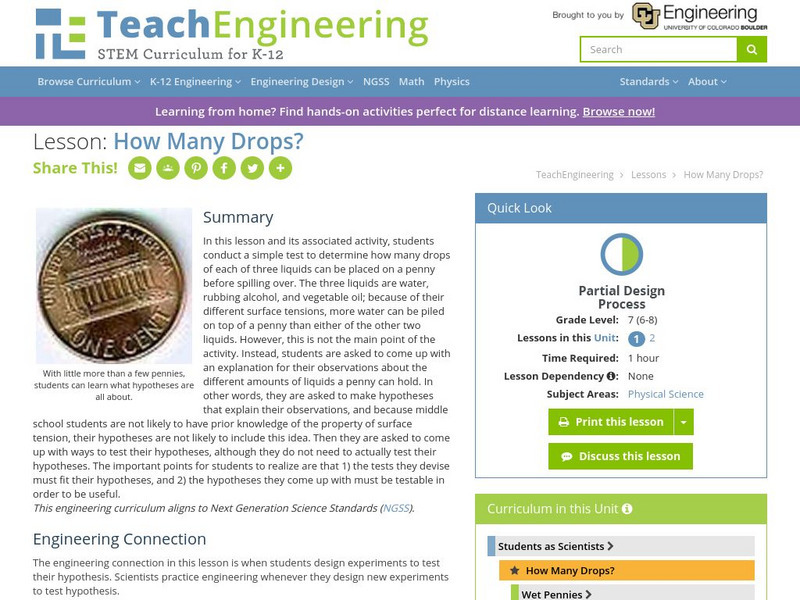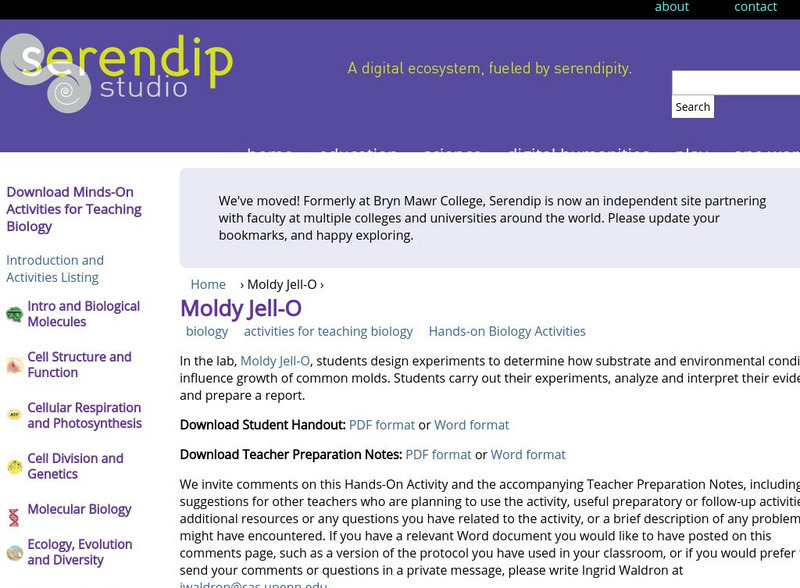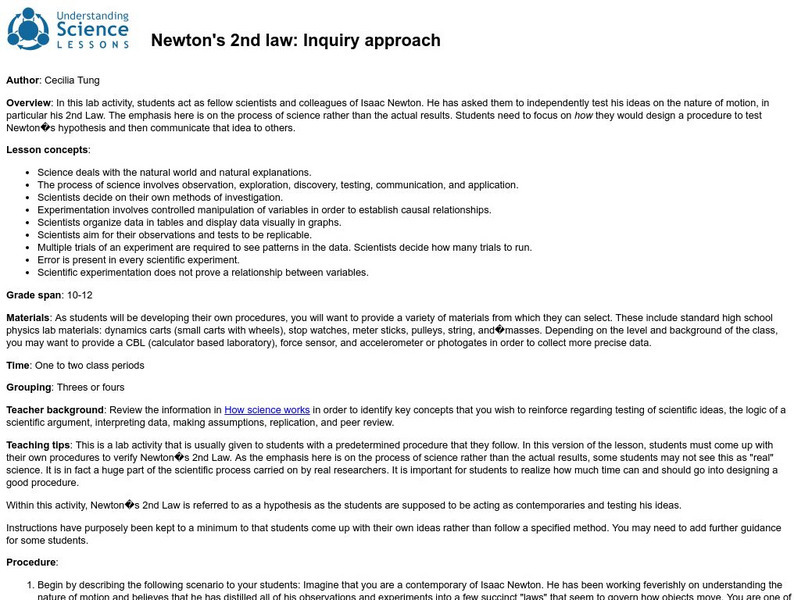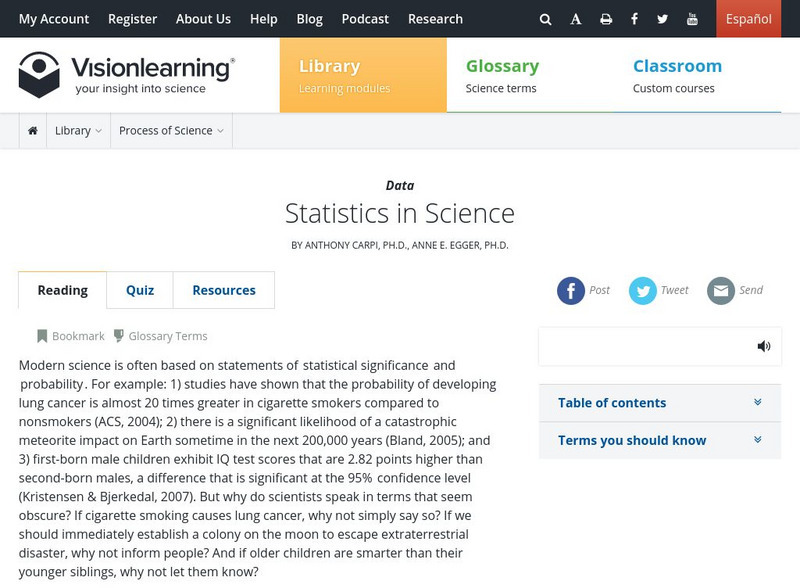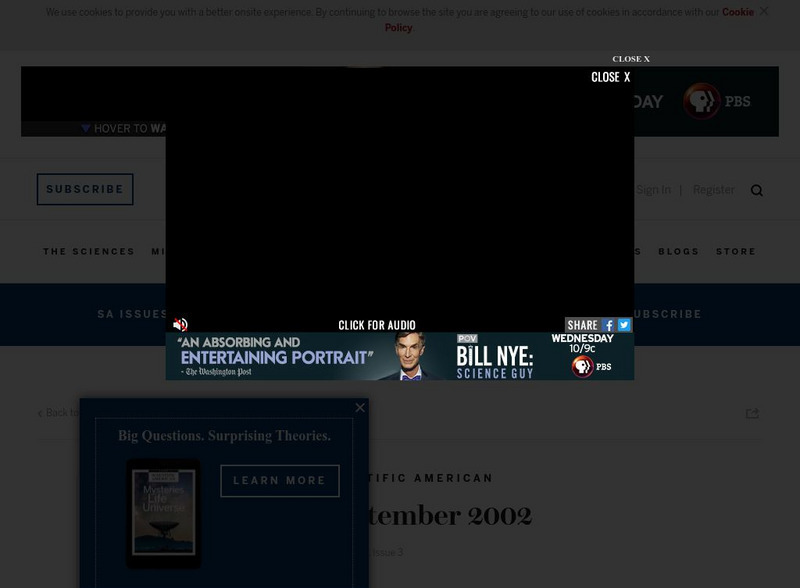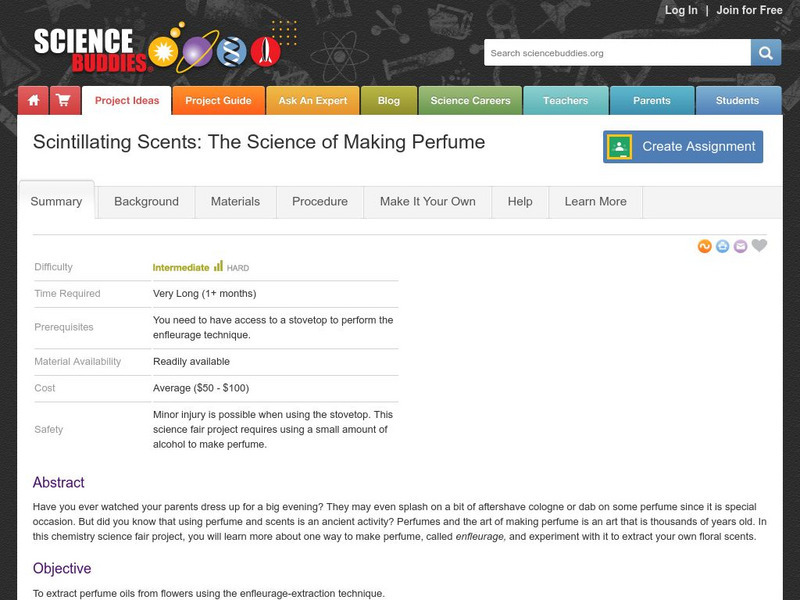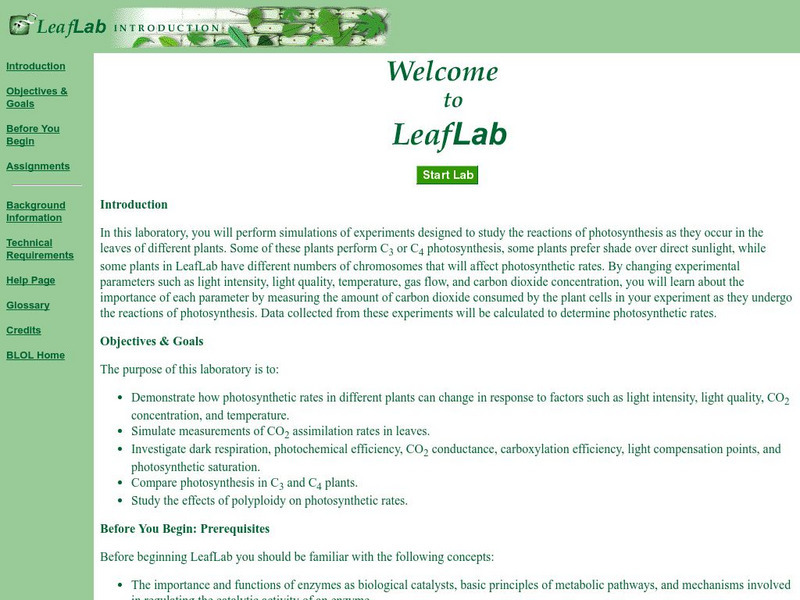Hi, what do you want to do?
Science Buddies
Science Buddies: Design Your Own Milk Carton Boat
Design different hull designs for boats from milk cartons and experiment with which hull will glide the fastest, be most maneuverable, and which will support the most weight. The Science Buddies project ideas are set up consistently...
TeachEngineering
Teach Engineering: How Many Drops?
In this lesson and its associated activity, students conduct a simple test to determine how many drops of each of three liquids can be placed on a penny before spilling over. The three liquids are water, rubbing alcohol, and vegetable...
TeachEngineering
Teach Engineering: Students as Scientists
This curricular unit contains two lessons that let students actually do the work of scientists as they design their own experiments to answer questions they generate. In the first lesson and its associated activity, students conduct a...
PBS
Pbs Kids: Dragonfly Tv Science Fair: Plan
So, you've chosen your topic and done your research, now, you need to plan your investigation. PBS site walks you through some steps to help guide you through the planning process.
Science Education Resource Center at Carleton College
Serc: Effectiveness of Mn Dams in Water Retention
Through this field activity, students will obtain hands-on experience by measuring stream flows and observing landform and stream processes of dams once before water freezes, and again after the weather deposition has occurred. Students...
Science Education Resource Center at Carleton College
Serc: Newton's 2nd Law: Inquiry Approach
In this activity, students test Isaac Newton's ideas on the nature of motion, in particular his 2nd Law. The emphasis is on the process of science, investigation, and experimentation, not the results. Students must come up with their own...
Climate Literacy
Clean: Uptake of Carbon Dioxide From Water by Plants
Two simple experimental demonstrations show the role of plants in mitigating the acidification caused when carbon dioxide is dissolved in water.
Bryn Mawr College
Serendip: Moldy Jell O
Brief text summary of what students learn in the Moldy Jell-O Lab along with links to download Student Handouts and Teacher Preparation Notes in PDF or Word formats. Students design the experiment and observe the growth of mold. Focus is...
University of California
Understanding Science: Newton's 2nd Law: Inquiry Approach Lesson
For this lesson, students develop their own scientific experiment to test Newton's hypothesis that the acceleration of an object depends on the net force acting upon it and its mass. After completing their designed experiment, students...
Alabama Learning Exchange
Alex: Probability
The purpose of this lesson is to begin the process of helping students to learn the basic principles of probability. The students will also collect data, interpret data, and determine the fairness of the game rock, paper, scissors.This...
Sophia Learning
Sophia: James Chadwick
This lesson explains the discovery of the neutron and Chadwick's experimental process.
Vision Learning
Visionlearning: Data: Uncertainty, Error, and Confidence
An explanation of how errors may affect data that has been collected for experimentation. Some examples are given.
Vision Learning
Visionlearning: Data: Statistics in Science
An explanation of how statistics allows scientist to explore the degree of uncertainty that accompanies conclusions that are based on data collected during experimentation and research.
Scientific American
Scientific American: Smart People Believe Weird Things
This article, published by Scientific American (September 2002), explores how smart people can believe weird and silly things. The article comes to the conclusion that our beliefs are shaped more by our environment than our understanding...
Michigan Reach Out
Michigan Reach Out: Creating a Salad Dressing
This site is provided for by Michigan Reach Out! Teach the scientific method with salad dressing! Students understand the scientific process and how it helps scientists by making salad dressing.
Vision Learning
Visionlearning: Practice of Science: Introduction to Research Methods
An explanation indicating that there is more than one method of scientific research.
Science Buddies
Science Buddies: Project Ideas: Scintillating Scents: Science of Making Perfume
In this chemistry science fair project, the student will investigate the process of enfleurage, a method of extracting scents, to make and test perfume. The Science Buddies project ideas are set up consistently beginning with an...
Other
California State University: Biology Labs Online: Leaf Lab
A set of virtual experiment assignments where students investigate the process of photosynthesis and how it varies with different types of plants. They will change experimental conditions to see how different factors affect the rate of...
TeachEngineering
Teach Engineering: Android Acceleration
Students prepare for the associated activity in which they investigate acceleration by collecting acceleration vs. time data using the accelerometer of a sliding Android device. Based on the experimental set-up for the activity, students...
British Library
British Library: 20th Century Teaching Resources: Virginia Woolf's Mrs Dalloway
In these activities, students will use manuscript drafts, notebooks, and essays to study Woolf's experimentation with form and use of language during the lengthy process of composition. They will also consider the work in the context of...
Texas Instruments
Texas Instruments: The Science of Racing
Turning the corners is the limiting process for racing cars. Going straight is simply about speed, but making the turns faster than other cars is a real challenge. In this activity, we ask how does weight balance affect the turn radius...
National High Magnetic Field Laboratory
Magnet Academy: Julian Schwinger
Theoretical physicist Julian Schwinger used the mathematical process of renormalization to rid the quantum field theory developed by Paul Dirac of serious incongruities with experimental observations that had nearly prompted the...
University of Southern California
California State Science Fair: What Makes a Good Science Fair Project?
A good first step to read. This set of recommendations or advice comes from the California State Science Fair Committee. Read carefully the first three paragraphs and the "Students are advised" paragraph.
University of Washington
Washington U: Model for Conducting Scientific Research
This page outlines the scientific method, step by step.





